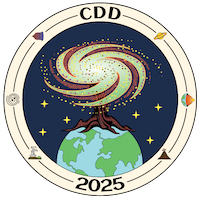Orateur
Description
Accurate models of the Earth's interior are essential not only to satisfy scientific curiosity but also to serve society, given their immediate applications and practical significance. Seismic waves remain our most powerful window into the Earth's interior, yet both the modeling of wave propagation and the interpretation of seismic data present significant challenges. Numerical methods, for instance, are often either computationally expensive and complex or simplistic and limited in accuracy. In addition, the inherent reliance on existing Earth models can constrain our ability to resolve absolute velocity structures. Overcoming these challenges is crucial for advancing our understanding of deep Earth.
This work addresses these challenges on two fronts: theoretical and observational. On the theoretical or numerical side, I develop one- and two-dimensional elastic wave propagation models using Radial Basis Functions (RBFs), a mesh-free numerical method that has gained prominence in recent years for its exceptional flexibility and precision in simulating elastic wave propagation in complex, heterogeneous media. RBFs are particularly well-suited for modeling wavefields in irregular geometries, allowing for high accuracy without the need for a structured grid. One of the persistent challenges in numerical simulations is the generation of parasitic waves due to the use of point sources, which are modeled as Dirac delta functions. These point sources, while convenient mathematically, introduce high-frequency noise that contaminates the primary wave signals. To address this, I use binomial filters at source locations, which approximate the Dirac distribution more smoothly and reduce parasitic waves. This technique improves both the spatial and temporal accuracy of the seismic waveforms without increasing computational costs.
On the observational front, I apply the recently developed Virtual Receiver Approach (VRA), a technique that leverages travel-time differences between closely spaced seismic stations to directly estimate local absolute velocities, independent of assumed Earth models. This independence from pre-assumed velocity structures provides a unique opportunity to investigate deep Earth features with minimal bias. While previous applications of VRA have successfully imaged the intricate structures of the Pacific Large Low Seismic Velocity Province (LLSVP), my work extends the application of this method to a new, yet-to-be-specified region of Earth’s interior. This extension aims to uncover new velocity anomalies that could provide insights into previously unexplored territories and compositional variations at depth.
This work combines refined numerical simulations with model-independent observational techniques to improve seismic imaging of Earth’s interior. The dual approach not only enhances the reliability of seismic interpretations but also opens new possibilities for global deep Earth studies and hence further ongoing geophysical studies.
| Speaker information | PhD 2nd year |
|---|

